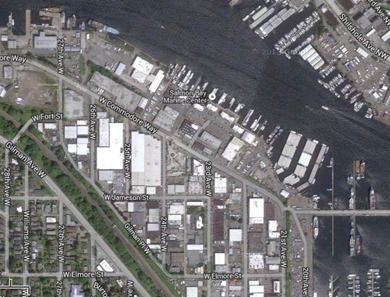
A great deal of your brain’s capacity is devoted to absorbing, processing, acting on, and storing visual information. What we see inspires us to act now and instills patterns for future action. If we have nothing to look at, we have little to act on.
Visual systems like kanban draw their power from our preference for visual information. Take a look, for example, at the following simple map. You see the water, the buildings, the roads, and a host of other information. You recognize this immediately. Within the blink of an eye, you understand context, form, and substance.

Here is a list of everything I cared to write down from that map. This is a partial list. And it’s in a font size necessary not to fill pages with text:
- Salmon Bay Marine Center
- Lake Washington Ship Canal
- W. Commodore Way
- 20th Ave W
- Gilman Place W
- W Elmore Street
- 21st Ave W
- Gilman Ave W
- Shilshole Ave NW
- W Fort Street
- 26th Ave W
- 24th Ave W
You can quickly see that long lists of things provide less context and take more time to process than a map.
Our goal with visual systems like kanban is to build a map of our work. We want the form and substance of our work. We want to understand the system, immediately and intuitively. We want our kanban board to be explicit about roles, responsibilities, work in progress, rate of completion, the structure of our processes, impediments, and more.
That’s a lot of information.